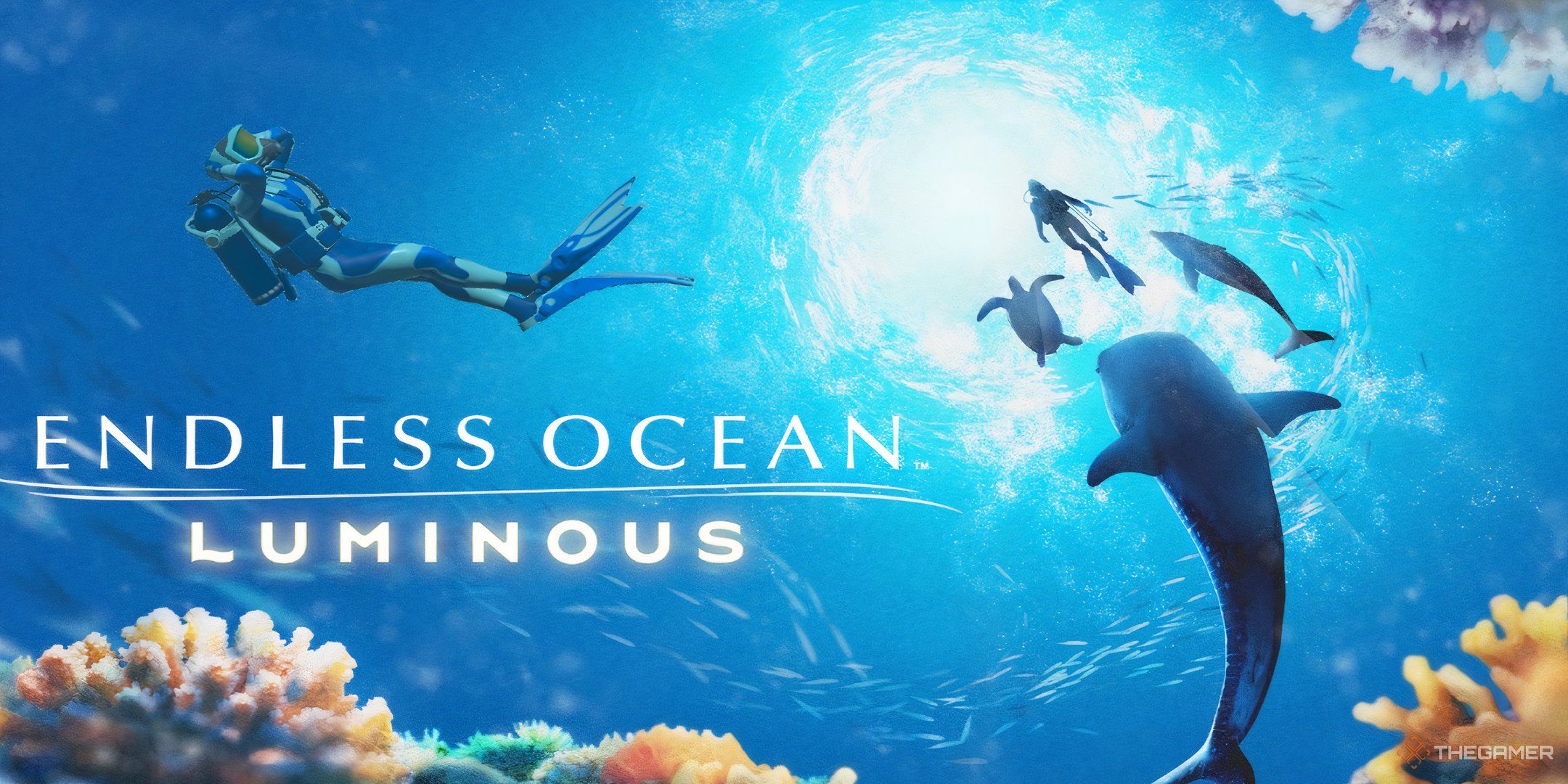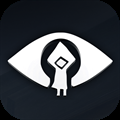
If you enjoy Subnautica, but would prefer something a little more relaxing, you'll want to give Endless Ocean Luminous a try. The adventure simulation game allows you to explore the fictional underwater world of The Veiled Sea. It blends familiar reality with a hint of fiction for an interesting experience.
RelatedThe 25 Best Underwater Games
Exploring the depths of an ocean can either be relaxing, terrifying, or a little bit of both. Here are the best games that are set underwater.
Posts 1While the basic premise of the game is to simulate a diving experience, there are some mechanics that could use a little more clarification so that you can make the most of the game's features. Dive into this mysterious underwater world and use these tips to enhance your diving progress.
Salvage Treasure
If you happen to begin with the Story Mode in Endless Ocean Luminous, it will remind you to search for treasure when you're on your dives. It doesn't really tell you why.
Some divers may ignore treasure entirely, but this is how you earn money in the game.
You might wonder what you would need money for in a game with no crafting or upgrades. It's a very simple diving simulator. There's no air tank capacity to keep track of, so nothing to upgrade, including your other diving gear.
There is, however, a section of the game that allows you to purchase color palettes for your diver, stickers to decorate your gear, and diver emotes. You'll find this under the 'Customize' section of the game's home screen.
Some of the costs for these cosmetics are quite high, such as one color palette that sells for 50,000 coins. If you want to change the colors of your gear or get some of the fancy diver emotes, you'll want to hunt treasure.
The circle at the lower left of your mini-map will glow yellow when you are near treasure. The sparkles that treasures emanate are difficult to see while swimming around if you're not close enough.
Pay attention to the treasure indicator to find treasures even in low-visibility areas. The indicator will only light up when you're facing the direction where the treasure is located.
Complete Special HQ Hunt Objectives
During any type of dive, whether it's an Event Dive, Shared Dive, Solo, or Story mode, you can encounter a special HQ hunt. These hunts request that you collect data on multiple specimens. You may even have multiple hunts during your dives.
The number of specimens you need to find and scan is listed in the upper left portion of your screen. This image shows three specimens out of seven have been scanned.
You'll see an orange dot in your circular reticle, and your controller will vibrate to let you know you are near a hunt objective specimen. The closer you get to the creature, the more rapid the vibration pulses become.
Your diving map will show orange-circled areas for the locations of special HQ hunt creatures. If you encounter a hunt before you've had a chance to explore the map, however, you won't be able to see those locations.
The orange hunt objective circles on your map are usually translucent so that you can still see important map features. These circles are different from the small opaque orange dots you'll see on the map.
The small bright orange dots are to show you where you've traveled, and they will gradually fade. It's merely to help you orient yourself on the map while swimming and keep track of where you recently were by using trail markers.
Hunts have two phases. The first phase involves finding the correct number of creatures. The second phase of a hunt reveals a special creature.
A small cutscene of the creature will automatically play, and you'll need to scan it to conclude the hunt.
Explore Dive Maps Strategically
Since special HQ hunts can happen at any time during any type of dive, you may want to be strategic about how you explore. If you stay mostly in one section of the map, you're less likely to see the locations of special hunt creatures.
Swim through at least some of the areas in each quadrant of the map as quickly as possible in Shared and Event Dives to increase your chances of encountering hunt objectives and locations.
Use the dolphin kick move to help you swim faster and cover more distance. You'll have to hit the button repeatedly, since holding it down doesn't work for a sustained dolphin kick swimming style.
Maps are technically considered complete at the 80 percent mark. Even once you've been notified that the map is completed though, no new areas will be filled in for you.
This means you will still have parts of the grid that are undiscovered and are parchment colored in the midst of your map. It may be a little annoying if you're a completionist where maps are concerned.
Try All The Dive Options
There are many different dive options in Endless Ocean Luminous. They all offer benefits or different vibes, depending on the experience you want.
The Story mode is helpful, incorporating some tutorial features with a basic story concept. It's very directed, so there's not much time for extra diving unless you ignore the guided objectives.
Shared Dives allow you to work together with other divers on a map. If one of the divers in a Shared Dive encounters an HQ special creature, it will initiate a hunt for everyone in the dive.
Scanning creature objectives is also a joint venture, so you'll get credit if someone else scans a special creature and vice versa. This is an ideal experience when you want to see other divers and share the workload of a dive.
Event Dives are limited-time dives that offer the opportunity to explore a special map and see creatures you may find difficult to encounter on regular dives. In all other ways, they are the same as Shared Dives, just with something special added.
Event Dives and Shared Dives have a countdown timer once a special HQ hunt objective is completed. If you don't leave the dive, it will automatically kick you out when the countdown timer at the top of your screen reaches zero.
To lengthen a Shared Dive, don't scan the end creature (second phase) of an HQ hunt or pick up the trail of another anomaly and begin another HQ special hunt.
Just make sure to find all the basic creatures required to complete the first phase of hunts.
Although special hunt work is shared between divers in Event and Shared Dives, any treasures found are luckily available for other divers to loot as well. You don't need to worry about splitting treasure equally. Everyone gets a chance to loot them.
Solo Dive is the most relaxed option. There is no time limit, and you can stay in the dive for real-life days if you want, so it's fine to take breaks and leave your Switch on standby.
If you want to explore maps to completion, relax, check out ruins, and enjoy the scenery, this is the ideal dive mode.
Collect 'Light' As Much As Possible
Each task serves a purpose in Endless Ocean Luminous. Collecting Light has a story-based reason, but also results in some perks for divers.
After you collect a certain amount of Light during dives, a lottery will occur to unlock additional tags. Tags are icons and emojis used to either convey a message, or indicate a place of interest.
You cannot purchase tags with the coins you collect from treasure, so you can only unlock them by continuing to collect Light during your dives.
You collect Light by scanning creatures that haven't been scanned before. They will appear as luminous blue creatures if they haven't been scanned.
You'll have a Light indicator bar in the top left corner of your screen with a bunch of circles in a row. Once each of those circles is fully lit up, you've collected enough light, and the lottery will happen automatically.
Any tags you've "won" will appear at the top of your screen for a short duration so you can easily view the results of the lottery.
When doing Shared and Event Dives, if other divers scan creatures, those creatures will no longer have the luminous blue quality to them.
You may still want to scan them if you think you've never encountered the creatures so you can update your Creature Log.
Since collecting Light is a byproduct of scanning sea creatures, it will factor into your diver rank in both the Research and Exploration categories.
Remember to check above you and on the ground when searching for creatures.
Some creatures are stationary and perched in unexpected places. Some creatures are also extremely tiny and difficult to see.
Improve Your Diver Rank
Shared and Event Dives provide you with a ranking system. You can check your rank for both types of dives individually.
After you've completed a Shared or Event Dive, you'll see a summary of your contribution. You'll see bronze, silver, or gold award medals for any category based on your performance during the dive.
Each category has a number of sub-categories that display how well you did. If you scroll down, you'll see the comprehensive allotment of the points you earned.
It's best to try and do well in all the categories, but sometimes, other divers just happen to be in the right place at the right time. They may beat you to special hunt objectives or be the first to scan creatures.
Even if you don't receive medals for any categories, you'll still receive progress for your ranking. As you continue to rank up, you'll unlock certain prizes, such as diver emotes.
Help Fellow Divers
When taking part in Shared and Event Dives, there are some ways you can help your fellow divers. This improves your own diver rank, as well as the ranking of others.
It's considered common courtesy in these multiplayer dives to mark treasure you encounter, along with any rare creatures, or the main objective of an HQ hunt.
All divers will be able to see tags, which makes it much faster to find treasure or creatures.
You can collect all the treasures and creatures, as well as track your collection progress in the Salvage Log and the Creature Log. You can access Logs from the main home menu in the game.
Your diver will automatically wave to other divers nearby, and spending some time alongside those divers will give you a diving buddy bonus that figures into your after-dive ranking score.
Even just a few seconds near another diver can result in some extra points.
If you're tagging creatures and treasure, doing your best to help in special HQ hunts, and revealing parts of the map by swimming around, there's nothing more you need to worry about. Just explore and enjoy.
Save Dive ID Numbers
Once you've unlocked most of the map, specifically reached the 80 percent exploration mark, the Dive-Site number will be available to you once the dive ends. You'll have the opportunity to take a screenshot of the number.
This is something you won't want to forget. When you're on Shared Dives, you may encounter a map with some puzzles and special creatures, or you might not have been able to explore as much as you wanted.
You can take the Dive-Site number and enter it under your Solo Dive option to explore at a leisurely pace. This makes sure you have a chance to catalog all possible creatures, and gives you the opportunity to collect more Light for unlocking tags.
Once you enter a new Dive-Site number for a Solo Dive, whatever Dive-Site number you were working on exploring before will disappear.
Make sure to take pictures of the identification number, or keep a log of any Dive-Site numbers you want to be able to revisit.
There are plenty of creatures to learn about and ruins to explore. Don't forget there's an in-game camera mode that's very nice, in addition to the Switch's photograph button. Enjoy sharing those awesome pictures and Dive-Site numbers.
5:25 Next12 Best Games That Explore Underwater Horrors
Take a deep breath before plunging into these games.
Posts












